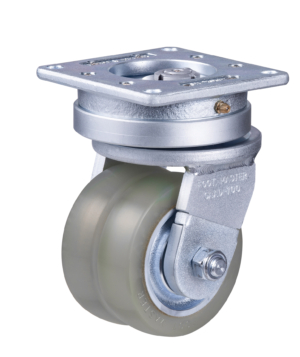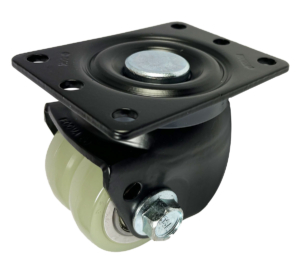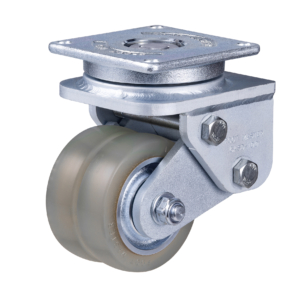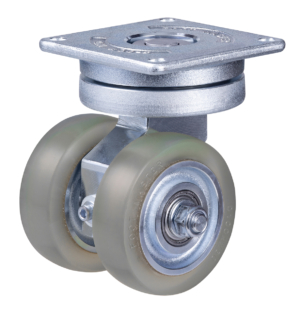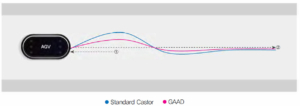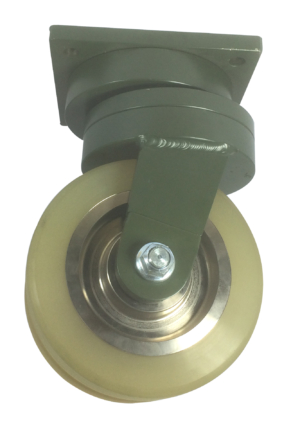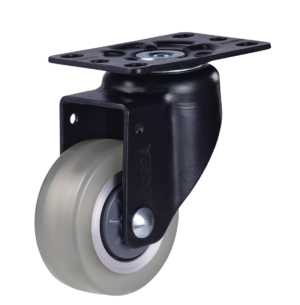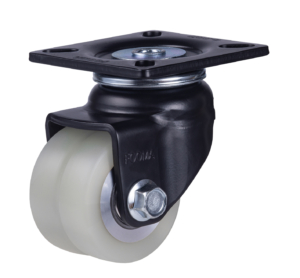- Sorry, this product cannot be purchased.
AGV Castors
Manually operated carts on the production line are used intermittently and at walking speed. AGVs can operate faster and continuously for 24 hours everyday. Standard castors suffer from wear and tear quicker and more often than when used in manual operations. Consequently, you need a durable castor to reduce the likelihood of an AGV stopp...ing which can lead to reduced productivity or safety issues. These durable castor series maximizes AGV operational performance ensuring cost savings and increased productivity.GAPH AGV Castor Series:
The GAPH series is an AGV castor for the compact AGV environment. This series not only satisfies rapid swivelling and high durability, but also carries a high load with a low overall height.
GAGD AGV Castor Series:
AGVs carrying a heavy weight are not easy to change direction. The bigger the swivel castor's offset the less force required to change direction so a castor with a large offset would help...but, AGV's also need to follow a designated line.
A large swing when changing direction can cause the AGV to come off its line and stop. A smaller swivel castor offset and dual wheels (Twin Wheels) would help solve this problem.
The GAGD series provides a solution because it is dual wheel (twin wheel) castors and has a smaller offset than that of a standard castor which helps prevent sudden stops when changing direction. Moreover, it incorporates two rows of thrust bearings to increase the swivelling performance and durability even under very heavy loads. This reduces the strain on the drive motor.
GASD AGV Castor Series:
A floor that looks smooth is often not really absolutely flat. AGVs are usually equipped with 4 castors and with even minor floor imperfections one of the wheels coming off the floor is common. If this occurs as an AGV is changing direction AGVs can become unbalanced. This means that the AGV can deviate from its designated line and come to an abrupt stop. The GASD series provides the solution.
The GASD Series has a shock absorbing function that can absorb repeated find vibrations and shocks generated during travel across an uneven floor. It has 10mm of spring so the AGV's wheels are always in contact with the floor. This significantly reduces the possibility of an abrupt stop when changing direction.
GAAD AGV Castor Series:
The GAAD has two rotation axes with different rotation radius. This enables the castor's ability to vary its swivel radius and automatically optimize it according to the castor's movement. How well an AGV can move in different directions is affected by the castor offset.
If the offset is too large, an AGV can swing, off its designated path. If the offset is too small, the drive motor can be overloaded. Many AGV engineers are struggling to solve this problem with AGVs. The patented automatic aligning function of GAAD helps solve both problems simultaneously.
GATD AGV Castor Series:
The shaft of GATD has a tiling structure that tilts freely in the range of +/- 5 degrees from its central axis. This enables both wheels of the castor to maintain contact with the floor for smooth AGV operation. Unlike standard dual-wheel castors, the wheels of the castor are separated. In a twin wheel castors, when turning, the wheels roll in different directions which makes the castors turning circle smaller. This is called self-compensation effect, an it reduces castor offset. The GATD series has a larger self-compensation effect than general dual-wheel castors and help prevent AGVs from deviating from their designated line. Read More


